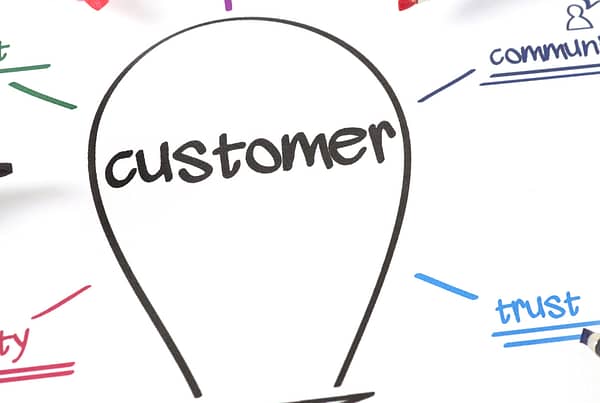With cannabis menus a relatively recent addition to the retail space, it’s safe to say that few retailers have considered how the structure and form of a menu can influence consumer behaviour. Yet, elsewhere, menu tactics (a concept known as menu psychology) has driven menu design and boosted sales for decades.
In restaurants, cocktail lounges, wineries, and other menu-toting spaces, owners have used menus to carefully direct their customers’ attention. Menu psychology is such a big business that there is even a booming industry of designers and consultants getting paid top dollar to optimise the customer experience.
With the launch of TechPOS’ new paper menu feature to use in combination with our long-standing digital menu solution, it’s about time we dove into the science behind menu psychology.
What is Menu Psychology?
Menu psychology is simple in concept: the study of how a menu design, format, and contents influence consumer behaviour. The goal is to direct the customer’s attention to the specific items you intend to sell, increase the average items per order, and boost the average spend per customer.
According to “Menu design: can menus sell?” by John T. Bowen and Anne J. Morris, the menu is a sales tool and a communication strategy all rolled into one. Especially when it comes to paper menus, you are quite literally placing a curated advertisement into a customer’s hand.
Whether for a restaurant or a cannabis dispensary, the principles are all the same.
4 Menu Tactics for Cannabis Retail
Over the years, a large body of research has explored the best tactics to optimise a menu. Most of these have been designed for the food service sector, but of course, cannabis retail is similar in many regards.
Some of the lessons learned within the restaurant sector on menu design can be directly applied to your cannabis store menu — especially when it comes to daily paper menus.
1. Numbers, Not Dollars
Research has shown that when you remove the dollar sign from the menu — 4 instead of $4 — customers spend more. This same principle also applies to removing decimal places — 4 instead of 4.00. As per a New York Times piece on the subject, “Even the word ‘dollar’ can trigger what is known as ‘the pain of paying.'”
2. Decoys
Do you frequently hear customers complain about the price? Try adding a decoy or two to your digital or paper menu. According to The Restaurant Times, “A decoy is an overly priced dish that makes other dishes look like a steal.” Throw on your priciest infused pre-roll or live rosin SKU, and the rest of the menu will seem much more affordable by comparison.
3. Detailed Descriptions
Wine, a similar retail product in many ways, has long employed menu psychology. Just think
about the last time you bought the second cheapest bottle of wine rather than the cheapest. Do you think that is a fluke?
In a recent study by Dennis Reynolds, consumers “exhibited significantly higher levels of concentration of longer duration” with an enhanced menu, which added descriptions and/or pairings to the usual basics of brand and price.
This suggested “that wine-menu design may positively influence consumer behaviour and that restaurateurs should use wine menus that provide richer content than traditional wine lists.” It’s fair to assume the same could be true for cannabis retailers.
Why not add information about the cultivator or the flavour notes?
4. Short and Sweet
Adding everything in stock to your menu is tempting, but there is value in a more curated experience. Consumers can get overwhelmed when presented with too much information, plus you want to ensure you are helping them focus on the products you want to sell.
So pare down the menu because, as Toast tells us, “Savvy restaurant owners list just seven dishes in each section – enough to make us feel like we have plenty of options without overwhelming us.”
Applicable to Digital and Paper Menus
How do you advertise your inventory to your in-store clients? These days, you are most likely to have digital menus offering a snazzy rotating list of items, possibly mounted behind the till or even throughout the store.
Digital menus quickly replace handwritten displays (like a chalkboard or custom printed menus) because they are easy to update, catch the in-store interest, and even reduce perceived wait time by people standing in line. Mcdonalds and Wendy’s have transitioned to digital menus for a reason.
How would you apply these same menu tactics to a digital menu? Here are a few examples:
- Curated daily special menus (ex: Smokin’ Saturdays Discounts, Staff Picks, etc.)
- Brand highlight menus focusing exclusively on the brand of the week
- Holiday sales (ex: 420, 7/10, etc.)
- Selected premium products to play into price psychology
- Limited SKUs listed in each category to prevent overwhelm
What about the paper menu? The physical menu is coming to cannabis dispensaries partially because it plays directly into menu psychology.
Here are a few suggestions for sneaking smarter menu tactics into your paper menu format:
- Add detailed descriptions to specialty items
- Include a few decoys to make other SKUs appear more affordable
- Remove decimal points and dollar signs
Harness the Power of Menu Tactics to Change Consumer Buying Behaviour
Menu psychology is a powerful tool that cannabis retailers can harness to boost sales and even enhance customer satisfaction.
Tactics like removing dollar signs and decimals, using pricey decoys, and adding detailed descriptions can influence consumer behaviour in a positive way.
These strategies are applicable to both digital and paper menus, allowing businesses to create a more curated and effective customer experience.
TechPOS has embraced menu psychology in full force with the launch of our new paper menu feature. Now, at the click of a button you can produce custom and fresh menus on the daily.
Want to see it in action? Schedule a demo today.





